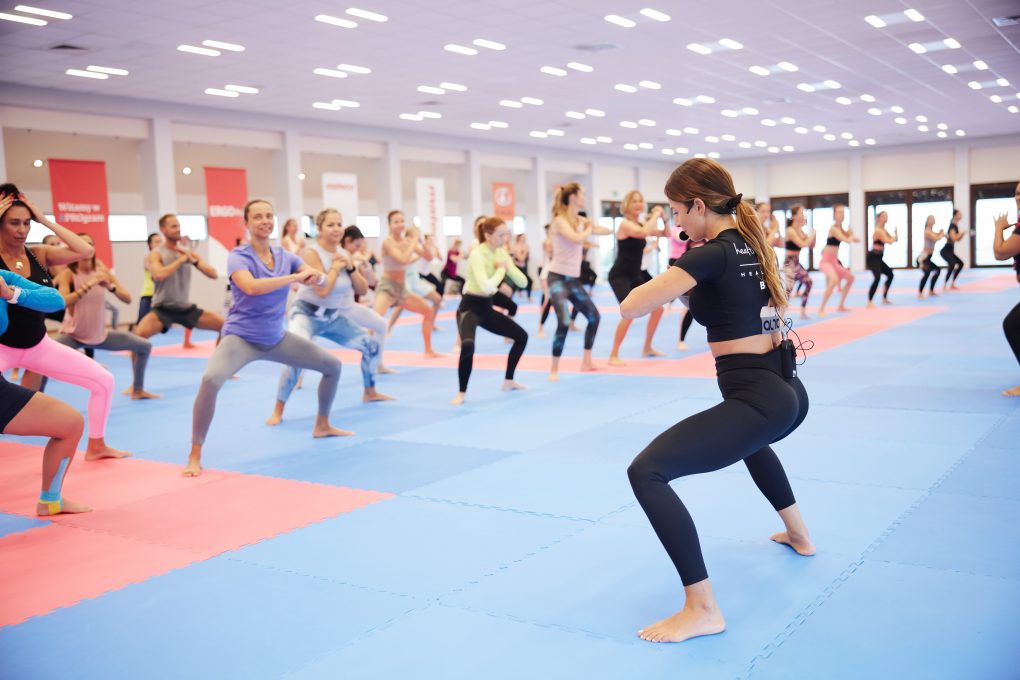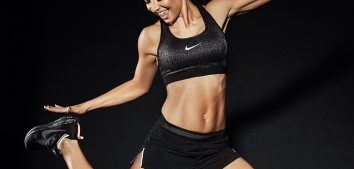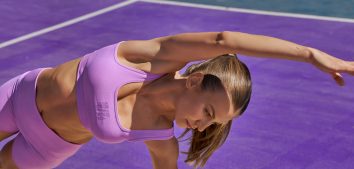
Preparation for the Ski Season and Training
Do you like active recreation? Are you looking forward to snow and fun on the ski slope? Be sure to read the tips on how to prepare for the whole season, especially if your daily physical activity is low… follow the principle that prevention is better than cure! Strengthen your muscles and joints, work on your stamina and mobility. This is the key to a successful season.
How’s Your Fitness?
Skiing down the slopes is great fun, but also a real effort for the body. If you lead a sedentary lifestyle and don’t move much on an everyday basis, then improving your fitness and efficiency is essential! After all, you don’t want to run out of breath after a few rides, do you?
If you have the time and possibility, it is worth planning aerobic training 3 months before the start of the winter season. Cycling, Nordic walking, running both outdoors and in the gym, swimming – as you can see, there are many options, choose what you like and keep it regular.
In my Diet & Training by Ann application (you can find it HERE) there are also a number of workouts to help build aerobic capacity. Depending on your level, look into the category of programs: “Start” or “Quick burning”.
Strengthening!
An essential part of preparation for the skiing/snowboarding season is strengthening the broadly understood locomotor apparatus: muscles, tendons, and joints. Going down a slope involves not only strong lower limbs, but also strong stabilizing muscles and the entire upper body.
It is worth getting to know the best exercises for individual muscle parts that you can do yourself, without leaving your home.
- Legs: squats, steps, lunges, lunges to the side, jumping from one leg to the other, stepping on one leg, standing with one leg on an unstable surface, pulling the knee to the chest while lying sideways – you can also perform these exercises with resistance bands or a load in the form of bottles with water, dumbbells or kettlebells
- Buttocks: lying hip raises with mini bands under the knees, hip raises with mini bands on the ankles, abduction of the bent leg in side lying with mini bands
- Stabilizing muscles (CORE): plank, side plank, lifting the hips in plank position.
- Stomach: short ab flex, mountain climbers plank position, dead bug, scissors or torso twists while sitting and standing
- Back and shoulder girdle: prone shoulder girdle raise, superman, alternating arm and leg raise while lying on stomach
You can also find great ready-made sets of exercises in my Diet & Training by Ann application. More on that in a moment 🙂

Balance
We all know how important it is to maintain balance if we really want to enjoy snowboarding or skiing.
Unilateral exercises that involve one side of the body more, e.g. one arm, one leg, are good in this case. These exercises include, among others: standing on one leg, deadlift on one leg, Bulgarian squat, one-legged squat, etc. You will not only strengthen the core muscles, but also ankles and knee joints, which are often overloaded and injured while on the slope.
Why should we prepare for the ski season?
- lower risk of injuries,
- better technique thanks to greater muscle strength and condition,
- perceived greater riding satisfaction,
- proper skiing / snowboarding is a great form of physical activity that helps you stay in shape and even lose weight.
As you can see, the advantages of preparing for the winter season are many! It is very important to start preparations early enough. A week or two is too short for good preparation. We should also consider training for at least a month, and preferably 2 to 3 months before the planned trips to the slopes.
Don’t Forget to Warm Up!
A warm-up prepares the body for physical exertion. Its purpose is to prepare both the nervous system and the muscles for the work that awaits them. Its task is raising body temperature and better oxygenation of all cells. A warm-up should be the first part of every workout in the pre-season, as well as on the slope before the first descent – don’t forget about it!
What should a warm-up look like?
Start with a few minutes of aerobic exercise – cardio, e.g. on a stationary bike, elliptical cross trainer, stepper or simply jogging in place or jumping jacks. Then move on to some dynamic stretching exercises. Starting with hip and arm circles, then moving to leg swings: to the side and front-back.
The last part of the warm-up should include specific exercises without load / basic movement patterns that will be used during training. These can be, among others: squats, hip hinge, glute bridge, lunges, jumps from one leg to another, or, if you have the opportunity to lie down, you can do various planks: front / side / back. You can also read more about it HERE. Done? Then you are ready for the proper training and have fun on the slopes!
Stretching is Also Key!
The purpose of stretching is to make muscles and tendons more flexible or stretched. As a result, the range of motion increases and flexibility improves. By stretching, we relax the body, and this has a positive effect on our well-being. Each stretching exercise should last between 15 and 30 seconds and should be in harmony with easy breathing.
Stretching exercises can be broadly divided into:
- dynamic – quick muscle stretching and return to natural length. This is a form of exercise recommended before exercise/training.
- static – maintain a static position for a certain period of time. It is recommended to perform this type of exercise in a separate training unit.
What do you think is the best time to stretch? Current research shows that it is best to perform stretching as a separate training unit, especially in people with a good level of flexibility and mobility. Beginners may find relief by doing stretching exercises immediately after exercise. Research does not confirm the significant effect of stretching immediately after training on reducing post-workout soreness and accelerating muscle regeneration.
After a whole day on the slopes, I recommend planning about 10-15 minutes for a set of stretching exercises in the evening, it’s really not much, and it will bring beneficial effects.

Workouts in the App
By training with my Diet & Training by Ann application, you can prepare for the ski season without leaving your home. I have a few training programs for you that will work well in this case.
- The New Start — the first step, it’s a program for beginners.
- Total Body Workout — also for beginners, but you train every day, intertwining endurance training with strengthening training.
- For Bad Knees — a program using resistance bands and a roller, which focuses on strengthening a different muscle group during each workout.
- Program Dumbbell Workout — here you can choose the difficulty level. The workouts are mainly focused on strengthening the legs and buttocks, but there will also be cardio exercises as well as strengthening the upper body and core.
- Fit Body Easy and Medium — workouts that will not take you more than 30 minutes during which you will strengthen the muscles of your legs, buttocks, and abdomen.
You can also use individual workouts that are in a separate tab in the application. I do recommend having a look there when it’s time to stretch. Yoga is a good alternative to stretching. I especially recommend these categories: Stretching yoga and Relaxation yoga.
I hope that I have exhausted the subject of preparation for the winter season on the slopes. Now everything is in your hands! Do not put the workouts off until the last moment so that your body is prepared for the effort. All this will help you enjoy the time spent on the slopes without injuries and running out of breath.
Bibliography:
-
- K. O’Sullivian i wsp. The effect of warm-up, static stretching and dynamic stretching on hamstring flexibility in previously injured subjects. BMC Musculoskelet Disord. 2009; 10: 37.
- P. P. Current concepts in muscle stretching for exercise and rehabilitation. Int J Sports Phys Ther. 2012; 7(1):109-19
- V. Bengtsson i wsp. Could the negative effects of static stretching in warm-up be balanced out by sport-specific exercise? J Sports Med Phys Fitness. 2018 Sep;58(9):1185-1189.










Comments No Comments
Join the discussion…